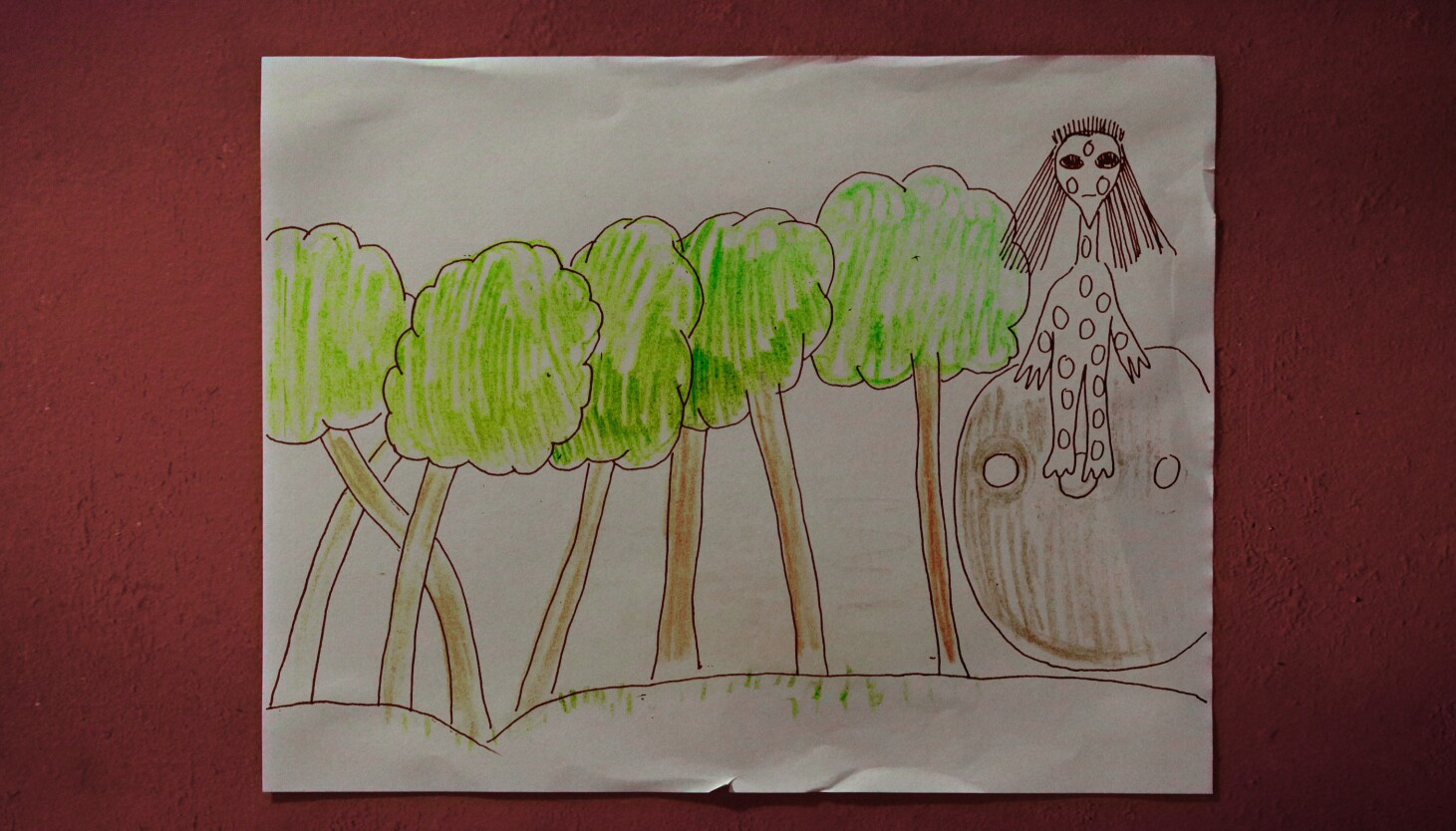UFO series ‘Encounters’ won’t sway any skeptics

Consider the following observations and assertions from various UFO believers in the Netflix four-part documentary series “Encounters.”
- “Do I believe there’s life on other planets? Yes. But I don’t think these are people from another planet. I still think [they’re] … angels.”
- “Nothing I am saying is anything new. It’s just a matter of, are you gonna believe it or not?”
- “I am an alien. I have been to many stars. Currently the Earth is going through a great ascension, and so I came here to satisfy my curiosity.”
Something tells me if you’re a UFO skeptic, these are not the types of comments that are going to sway you to the other side.
‘Encounters’
Even though this sincere and intermittently interesting docuseries bears the imprint of Steven Spielberg’s Amblin Television (teaming with Boardwalk Pictures and Vice Studios), there are times when Spielberg’s alien-visitation classics “Close Encounters of the Third Kind” and “E.T.” feel at least as plausible as some of the claims made by the eyewitnesses and true believers showcased in the series.
With director Yon Motskin (“Generation Hustle”) delivering solid work that revisits four well-known stories of alleged UFO sightings, “Encounters” plays like a respectful video Wikipedia recap with a sprinkling of new revelations. While I don’t discount the possibility that beings from other worlds have dropped by, I remain deeply skeptical, with the same questions many Earthlings have been asking since the first recorded alleged sightings of UFOs aka UAPs (Unidentified Aerial Phenomena):
- Why do UFOs almost never drop in on major metropolitan areas, instead choosing to contact a few folks in remote and rural locales?
- Why is the video and film footage always so grainy and inconclusive?
- Why is it always a “flying saucer” or a “cigar shaped ship,” and why does almost every description of the aliens sound the same, e.g., long limbs and oversized heads and oversized eyes?
- Why do the aliens never, ever, ever stage a big press conference to explain exactly why they’re here and what they’re hoping to accomplish? Why do they never attack but also never communicate their desire for peace? If they’re sophisticated enough to travel here from unimaginable distances, why do they refrain from speaking with us or even interacting with us for any extended period of time?
- Aliens? Really?
In the opening episode, “Messengers,” we’re told that in January 2008, “over 300 people reported seeing mysterious lights in the sky over Central Texas. Researchers call this event the most significant civilian sighting of the last 30 years” Pilot and businessman Steve Allen of Stephenville, Texas, recalls seeing high-intensity lights moving at an incredibly high velocity and says, “It was almost like a religious experience, like I was at one with whatever it was.” Other eyewitnesses, who come across as normal, reliable folks, recount similar experiences. One such believer even managed to capture the possible UFO on his video camera, but “something was interfering with the quality … whoever was responsible for it, did not want clear footage of it.”
Isn’t that always the way?
Episode 2, “Believers,” revisits a 1994 event in Ruwa, Zimbabwe, in which some 60 schoolchildren claimed to have been visited by a large, shiny, silver disc from which aliens emerged, wearing scuba-type suits, with big heads and large eyes. According to some of the children in interviews conducted at the time and in present day, the aliens telepathically communicated messages stating that the environment should be a top priority and humans needed to take better care of the planet. How specific! Maybe it’s because they were eyeing our property for a future home?
One former student says, “I made up the whole thing,” and suggests the other kids got caught up in some kind of mass hysteria, convincing themselves they saw aliens — but the former students interviewed for the documentary remain convinced their experiences were legitimate. The question remains: If super-intelligent beings want to convey an admittedly prescient warning about the environment, why did they choose a bunch of kids on a playground to receive that message?
[embedded content]
The “Broad Haven Triangle” episode also revisits a wave of sightings that began with children. In February of 1977, children from the Broad Haven Primary School in Wales reported seeing a flying saucer — claims that were repeated later in the year in two other nearby locales. The skeptical headmaster separated the students and had them draw and describe the UFO, and their renderings were quite similar. Then again, as is pointed out in the doc, their drawings also resembled the typical flying saucer seen in movies such as “Forbidden Planet.”
Finally, in “Lights Over Fukushima,” we’re steered further away from somewhat reasonable debate and into the realm of spirituality and psychological study. We start with story of the Fukushima nuclear plant meltdown of 2011, with hundreds reporting seeing mysterious lights in the sky, in the aftermath, and we hear theories about the connection between UAP activity and nuclear power plants, and also the idea that advanced E.T.s are living and operating from deep in our oceans. We also get that aforementioned claim by one Miho Ninagawa, who matter-of-factly states she’s an alien. There’s no challenging of this claim, nor does she provide a shred of evidence to back this up. We just hear this person spouting this madness, and we wish her well.
This article has been archived for your research. The original version from Chicago Sun-Times can be found here.


